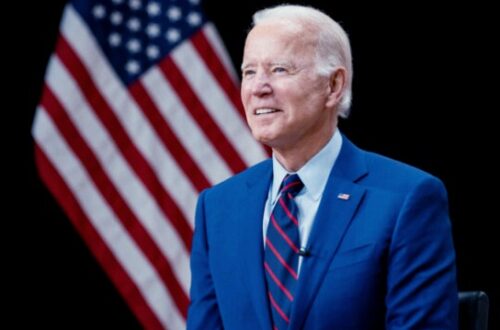Heading into the 2024 election cycle, a priority for both the Democrats and the Republicans is to form a united front within their parties. However, slight division is brewing within the Republican Party about immigration policy.
With significant Latino support in recent elections, the GOP have begun to rely on Latino voters to swing important races in their favor.
In 2016, Democratic presidential candidate Hillary Clinton won Miami-Dade County, a county with a large Latino population, over Donald Trump while still losing the state. In the same county four years later, Democrat Joe Biden barely won. In the 2022 gubernatorial race, the county voted mostly for Republican Gov. Ron DeSantis.
Along the southern border in Texas, the counties of Maverick, Webb, Zapata, Starr, Hidalgo and Cameron also went to Hillary Clinton in the 2016 election by differences of 55.8%, 51.5%, 33%, 60.2%, 40.5% and 32.5%, respectively.
In those same counties four years later, the differences between Joe Biden and Donald Trump shrunk to 9.5% in Maverick, 23.2% in Webb, 5.4% in Zapata County in favor of Donald Trump, 5% in Starr, 17% in Hidalgo and 13.2% in Cameron County.

The following graphs compare the 2016 and 2020 presidential election results in those counties in southern Texas along with the population data of those counties and the percentage of Latino residents in 2021.


These voting and demographic trends demonstrate significant and potentially election-altering support for the Republican Party among Latino voters. These voters have shown support for Donald Trump, the former president who wasn’t scared in proposing and enacting strict immigration enforcement.
As president, Trump allocated more than $15 billion for a wall on the southern border of the country, reduced the number of asylum seekers in the U.S., and implemented a “zero tolerance” policy which prosecuted anyone with a child coming into the U.S. illegally, among a slew of other presidential proclamations that altered immigration into the country.
Despite these policies during the Trump presidency, the support behind the Republican Party from Latino Americans has evidently persisted. This can partially be attributed to the support of law enforcement and the oil drilling industry in the GOP, which directly affect the population of south Texas.
In Florida, there are many Cuban and Venezuelan migrants. Cuba and Venezuela have economically suffered from the effects of communism, which caused mass migration from those countries to the U.S. to begin with. The Republican opposition to anything remotely similar to communism or socialism has resonated with Florida’s Latino voters.
The momentum of Latino voters supporting Republican candidates in the 2020 and 2022 elections have helped secure the GOP a majority in the U.S. House of Representatives. With this, however, there has been some fracturing within the party on immigration as Latino representatives have been elected into office as well.
One representative elected in 2020, María Elvira Salazar, R-Florida, has come out against a strict immigration policy in the House. Salazar’s district encompasses the city of Miami, including Little Havana, a large Cuban neighborhood.
The proposed measure in the House would severely limit asylum seekers at the border. Rep. Tony Gonzales, R-Texas, has also critiqued the legislation, going as far as calling it “anti-immigrant.”
Both representatives were recently elected, and represent not only their constituencies but also a potential new wing within the Republican Party.
With this recent trend of Latino voters supporting the GOP, Republicans will have to juggle trying to appease two distinct demographics who may want differing policies to be implemented. While there could be a certain aspect of the Republican agenda that attracts Latino voters to the Republican Party, there could also be long-standing conservative policies that may need to be changed with shifting demographics and political support.
This sets the stage for a potentially contentious 2024 Republican primary as factions within the party, mainly between Trump and Florida Gov. Ron DeSantis, have proliferated. Whether the new and moderate Republicans will have a positive effect on Latino support for the Republican Party has yet to be seen.
Check out other recent articles from the Florida Political Review here.
Featured image: State Capitol Protester in Raleigh holding “Latinos for Trump” sign. (Unmodified photo by Anthony Crider used under a Creative Commons license. https://bit.ly/40sq61o)





